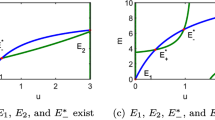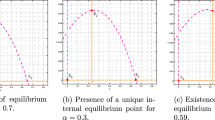Abstract
Optimal control theory is applied to the problem of controlling pests by biological and chemical means simultaneously. The net birth rate of the pests is controlled chemically while at the same time predators are allowed to operate. Several numerical examples are included.
Similar content being viewed by others
Literature
Athans, M. and P. L. Falb. 1966.Optimal Control. New York: McGraw-Hill
Becker, N. G. 1970. “Control of a Pest Population.”Biometrics,26, 365–375.
Davis, H. T. 1962.Introduction to Nonlinear Differential and Integral Equations. New York: Dover.
Fletcher, R. and C. M. Reeves. 1964. “Function Minimization by Conjugate Gradients.”The Computer Journal,7, 149–154.
Vincent, T. L. 1975. “Pest Management Programs via Optimal Control Theory”Biometrics,31, 1–10.
Walsh, G. R. 1975.Methods of Optimization. London: Wiley.
Author information
Authors and Affiliations
Rights and permissions
About this article
Cite this article
Walsh, G.R. Optimal control of pests in the presence of predators. Bltn Mathcal Biology 40, 319–333 (1978). https://doi.org/10.1007/BF02461604
Received:
Revised:
Issue Date:
DOI: https://doi.org/10.1007/BF02461604




